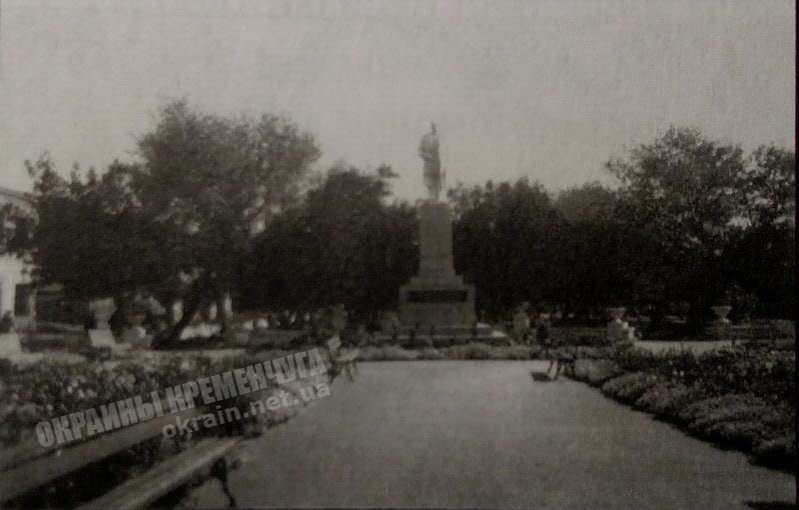Birzhevaya Square was founded in 1887 on Birzhevaya Square between Khersonskaya (now Lieutenant Pokladova, former Karl Marx) streets, Birzhevaya (now the territory of kindergarten No. ”, Cathedral Street, No. 18/14), Konstantinovskaya Zelenaya (now the Heavenly Hundred).
Entertainment facilities were located near the square. Opposite the square along Khersonskaya Street (more precisely, at the corner of Khersonskaya and Birzhevaya) in the house of Yampolsky in 1912 housed the Theater of Miniatures, and later – the cinema “The New Theater of V. and H. Keysermans.” It was in this Theater of Miniatures in the summer of 1912 that the Odessa actor Lazar Weissbein began his stage activity, later changing his name and surname to Leonid Utyosov. The house has survived to this day and is located at the address: Lieutenant Pokladova street, No. 7
Along Birzhevaya Street, parallel to the square, on the first floor of the Shapiro house there was a bioscope “Zvezda”, the owner of which was the above-mentioned gentleman. Later, his Fars theater was located there. Interesting is the fact that the Zvezda bioscope released a documentary film on January 16, 1914. Filming of the solemn funeral ceremony of 22 Torah scrolls that burned down in the Kremenchug synagogue, carried out on January 13, 1914, was shown to the choral singing and music of the organ by K. Oxygendler – hazzan (choir leader) of the Choral Synagogue in Kremenchug, a graduate of the St. Petersburg Conservatory, composer, teacher. Unfortunately, the film, produced by Dmitry Ivanovich Kharitonov, a Kharkov merchant, film industrialist, founder and owner of the Kharitonov Trading House, has not survived. Both the local newspaper “Pridneprovsky voice” and the central “Nasha Nedelya” No. 43, “Kine-Journal” No. 3, 5 (Moscow) wrote about the film. In addition to the funeral, the landscapes of Kremenchug were captured on this film for the first time.
In the house of Militinsky at the corner of Birzhevaya and Stolypenskaya streets (now Heavenly Hundred, No. 17), part of which has survived to our time, there was a printing house of Dokhman Isaac Abramovich, founded in 1875, notary offices were located in the same house, and in the wing, which stretched along Stolypinskaya Street – Blyakher’s Compound Riga Hotel.
100 years ago, the same problems existed in the maintenance of the city’s green spaces as they do now. Wealthy Kremenchuzhites helped to solve them. So, through the efforts of Mr. Shapiro, Birzhevoy Square, which had been neglected at that time, was brought into a diligent appearance. The alleys were arranged and kept clean, garden benches were installed, an arc electric lantern was installed in the middle of the square, and flowers were planted. The Kremenchug public had the opportunity to relax in a cozy corner before film screenings and performances or after them. In the evenings, the square was visited by many people.
After the establishment of Soviet power in Kremenchug, the city administration was located in the building of the City Duma near the square, so in the pre-war years it was considered central. It was here that the first permanent monument to Lenin was erected in Kremenchug, which was solemnly opened on November 7, 1926 (authors – architect L. Shpakovsky, sculptor V. Kozlov). The monument was built on donations from the people of Kremenchuk, it was located closer to the modern Lieutenant Pokladov Street. The bronze statue of the leader with his right hand raised up stood on a high pedestal made of local gray granite and was oriented to the street. In the pre-war years, the park was actively visited not only by adults. According to the memoirs of G. I. Ryabykh, a woman from Kremenchuk, children from kindergartens were brought there for walks and the children even danced around the monument to the leader of the world proletariat.
During the occupation of Kremenchug, the monument was destroyed, the trees in the park were partially cut down. In the post-war years, the square was rebuilt. On November 7, 1948, the reconstructed monument to Lenin was inaugurated. The figure of the leader, 2.85 meters high, cast from marble chips, was installed on a surviving granite pedestal.
A low fence was erected around the square. The square itself was divided into two parts: the memorial, which was formed around the monument, and the rest, which extended to the modern street of the Heavenly Hundred. Three parallel alleys led to the monument from the modern street of Lieutenant Pokladov, which in summer were decorated with flower beds with petunias, alyssum, cosmos. Huge red cannes were traditionally planted around the pedestal in a flower bed. Behind the monument was a low white fence with flower vases, which separated the memorial part of the square from the recreation area with wooden garden sofas in shady alleys.
In 1965, on the day of the liberation of Kremenchug from the German Nazis – September 29, the monument to the leader was transferred to the park MYUD (International Youth Day). The territory of Birzhevoe Square is being built up over time.
Information from the book of scientists of the Kremenchug Museum of Local Lore Muzychenko N.V., Sokolova I.M. “Emerald clothes of Kremenchug: the history of the city in parks and squares.” / Under scientific. ed. O.M. Bayrak – Kremenchug LLC “Kremenchug City Printing House”, 2016. – 192 p., 220 ill.

